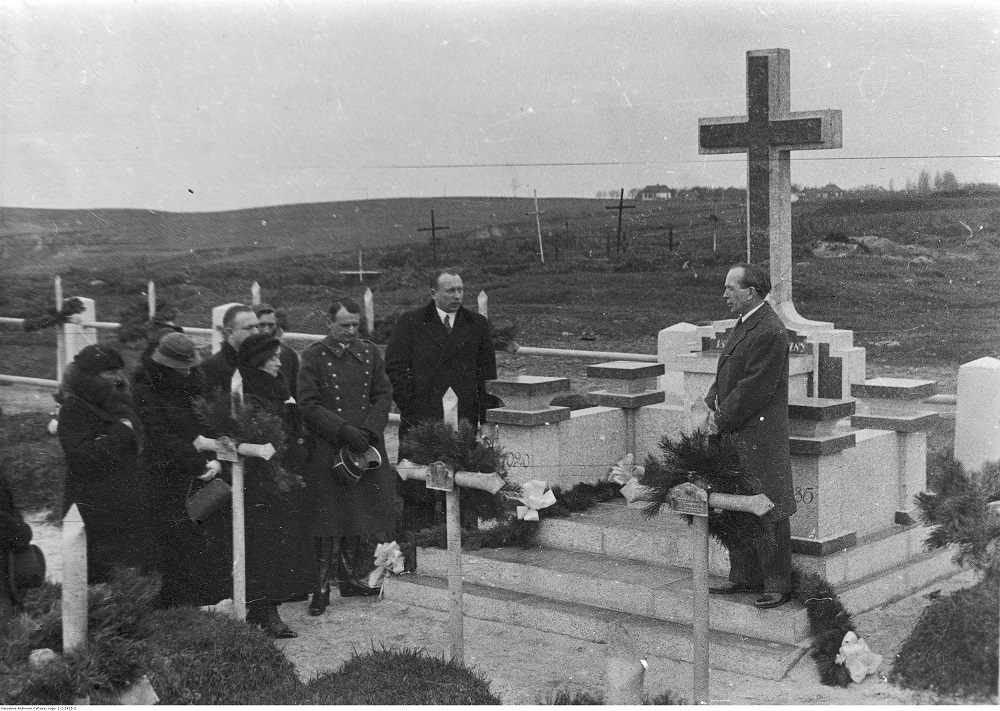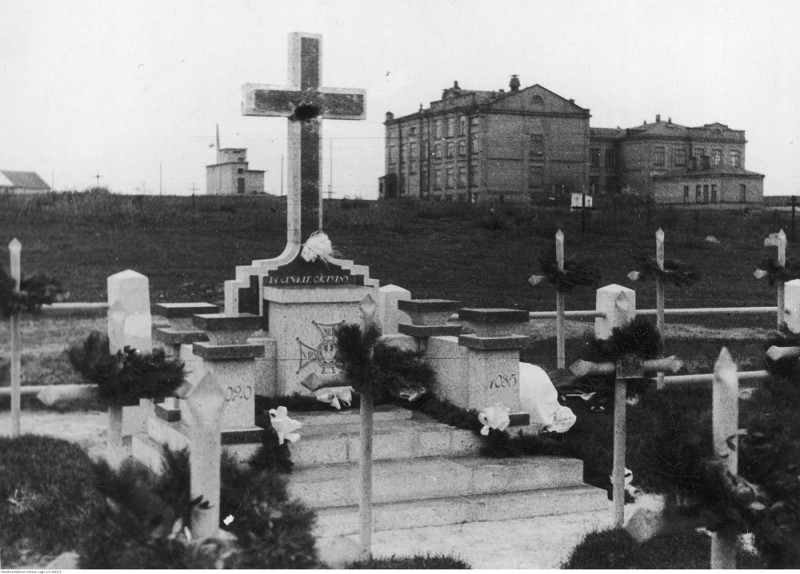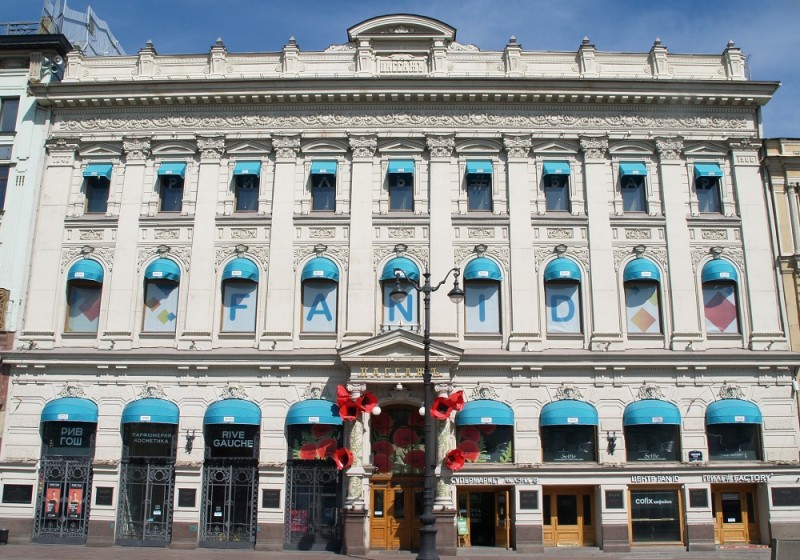Kiev – the grave of Polish soldiers from 1920 in the Baikove cemetery
One hundred years ago, in June 1920, the Polish Army and the allied Ukrainian Army began retreating from central Ukraine as a result of the Red Army's counter-offensive. A reminder of these events is a symbolic grave of Polish soldiers located in the Catholic part of the Baikove Cemetery in Kiev. Within the monument’s turbulent history it was extended in the interwar period with the consent of the Soviet authorities, and later destroyed twice.
Soldiers’ grave in the Baikove Cemetery
In the Catholic part of the Baikove Cemetery, among the post-war burials, away from the main paths, there is a symbolic grave of the Polish Army soldiers. Its central element is a simple stone cross on a plinth decorated with a relief of the Virtuti Militari cross. On both sides of the cross there are plaques in Polish and Ukrainian informing about the 114 soldiers killed in combat in Kiev and its surroundings in the spring of 1920.
The grave extends over only a few square meters. The memorial placed there originally in 1935 was destroyed in Soviet times, and the present one, whose shape refers to it, was built in 1998 by The Council for the Protection of Memory of Struggle and Martyrdom.
History of the memorial in the interwar period
Polish soldiers, mostly from the 1st Legionary Infantry Division, who were killed during the fights in Kiev and its surroundings, were buried in the Baikove Cemetery in May and June 1920. After the Polish-Bolshevik war, under the Treaty of Riga, Poland and the USSR committed themselves to mutual respect for the burials of soldiers of the opposite side on their territory. Beyond the eastern border of the Second Polish Republic, most such cemeteries were in Belarus and some in Ukraine. As far as possible, they were taken care of by Polish consulates in Minsk and Kiev.
The Polish soldiers’ memorial in the Baikove Cemetery originally comprised a mass grave and individual burials marked with identical metal crosses with nameplates. At the end of 1934 at the suggestion of the Consul General in Kiev, Jan Karszo-Siedlewski, a cross-shaped monument was erected, which was almost 3 meters high and was decorated with several reliefs. Interestingly, the monument was not made in Poland, but it was commissioned at a local stonemason’s workshop. The unveiling ceremony took place on 3 May 1935.
It is worth noting that it was the period of the greatest Stalinist terror - two years earlier the Great Famine in Ukraine had ended, and two years later there was the anti-Polish NKVD operation in Kiev, during which hundreds of Poles were murdered and both Catholic churches were closed.
The memorial was first destroyed as soon as three years later. In October 1938 one of the consuls, while visiting the Baikove Cemetery before All Saints' Day, was surprised to find that the resting place of Polish soldiers had been completely destroyed, and the construction of an agricultural research institute had begun in its place. This met with the outrage of the Polish Ministry of Foreign Affairs, which, referring to the provisions of the Treaty of Riga, intervened immediately with its Soviet counterpart in Moscow. Interestingly, this had an effect and the Soviet Foreign Office obliged the city authorities of Kiev to immediately rebuild the memorial at their own expense. The works began in December 1938 and individual graves were partially reconstructed. However, the works quickly stopped due to heavy frost and snowfall, and the stone monument was probably not reconstructed before the beginning of World War II.

Fot. NAC
Further history of the memorial
After the Soviet aggression against Poland in mid September 1939, the NKVD kidnapped the last head of the consulate, Jerzy Matusiński, who was later murdered in unknown circumstances. In the years to follow the graves of the Polish Army soldiers were devastated again, this time completely. Only the bas-relief of Virtuti Militari and one metal cross remained from the original monument, and the area was used for new burials. The memorial could be reconstructed on a much smaller area only after the fall of the USSR.




